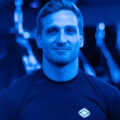The buccal fat removal procedure or cheek reduction procedure focuses on thinning the cheeks.
In this guide, we will share everything you need to know anything about buccal fat removal. We will talk about the risks, how the procedure works among other important details.
The middle of your cheek, otherwise known as the rounded portion of fat is called the buccal fat pad. This portion of fat is found in between some muscles on your face, in the empty portion under your cheekbone. Hence, the size of your buccal fat pad influences the shape of your face.
It is important to note that there is no person without a buccal fat pad. However, the size does vary from one person to the next. So for some people, they might have a large buccal fat pad, which makes their face feel rounded or full.
This is why these sets of e people may have what we normally call “chubby cheeks”, “baby face”, or “chipmunk cheeks”. Having a large cheek or buccal pad is normal. But if you wish to make your cheeks smaller, you can consider doing the buccal fat removal procedure.
What is Buccal Fat Removal?
Buccal fat removal is a special kind of plastic surgery focused on the removal of fat from the cheek. It is also called cheek reduction surgery or buccal lipectomy.
The procedure involves removing the buccal fat pads located in the cheeks surgically. This will make your cheeks look thin and the angles of your face more defined.
You can either do the surgery alone or with another kind of plastic surgery, like Rhinoplasty, box injection, chin implants, facelift, and lip augmentation.
How to Decide if You Are a Perfect Candidate for Buccal Fat Removal
Usually, your surgeon would tailor your cheek reduction surgery to your individual needs. However, some conditions would make you eligible for this procedure. In general:
- You must possess a rounded and full face.
- Physically, you look healthy.
- You are looking for facial feminization surgery.
- Your weight is healthy.
- Your expectations are realistic.
- You do not like how full your cheeks are.
- You are not a smoker or you don’t use tobacco products.
- You are suffering from pseudogenization, (that means you have a small rounded fat mass in your cheek that is caused by a weak buccal fat pad).
Who Should Avoid the Buccal Fat Removal Procedure
However, buccal fat removal is not meant for everybody. Therefore, there are some scenarios where it might not be recommended. They are:
- If you have a narrow face: Naturally, if your face is thin and you undergo the surgery, it might result in sunken cheeks as you advance in age.
- If you are older: It is natural to lose fat in some areas of your face, as you advance in age. So, undergoing this procedure might make the jowls’ other indications of facial ageing more prominent.
- If you are suffering from progressive hemifacial atrophy(Parry-Romberg syndrome): This uncommon syndrome makes the skin on one area of the face shrink, and this can affect the buccal fat pad.
So, before you go for a buccal fat surgery, it is advisable you seek the counsel of a plastic surgeon. Because he would be in the best position to tell if you are fit for the surgery. You may not also be considered for this procedure if you are obese or have unstable body weight and are dealing with other severe health problems.
How is the Buccal Fat Removal Procedure Being Carried Out?
Before Procedure
Before the procedure, your surgeon may discuss certain things with you such as:
- the kind of medications you are taking at the moment, vitamins and supplements inclusive.
- Your expectations and the goal for the surgery
- the past surgeries you must have had
- the kind of drugs you are allergic to
- if you take alcohol, tobacco, or any other kind of hard drugs
- if you have had any medical condition before
With this information, your surgeon can choose the right surgical approach, and figure out the risks likely to occur and recovery outlook.
For this procedure to commence, you might be required to completely stop certain medications or run blood tests. Your surgeon will also analyze your facial structure and take some pictures before commencing the procedure. You might be asked to refrain from using blood-thinning substances or avoid smoking at least 2 to 4 weeks before surgery. You may be asked to avoid drinking or eating at least 6 hours before the surgery.
During Procedure
The procedure might be carried out in a hospital or a doctor’s office. Everybody’s experience will differ slightly but certain activities remain constant such as:
- If your only aim is to get the buccal fat removed, then local anaesthesia will be administered to your face. The anaesthesia will cause you no pain in your face, although you will be awake throughout the procedure.
- Alternatively, if you will be undergoing more than one surgery then general anaesthesia will be administered to you. And in such a case you will require a ride from the surgeon’s office.
- The side of your cheek is where your surgeon will make an incision. Thereafter, the surgeon will put pressure outside your cheek to expose the buccal fat pad.
- Then the fat pad will be cut off and removed by the surgeon.
- Then dissolvable stitches would be used to patch your wounds.
At the End of the Procedure
When the procedure has ended, a specific mouthwash would be given to you, that will help prevent infection. The surgeon will also share with you guidelines on aftercare.
You will have to consume only a liquid diet for the first few days. After that, you can then start eating soft foods, then gradually start eating your normal meals.
At the end of the surgery, there might be some swelling and bruising. You don’t have to worry much because they will both reduce as you heal.
It might take about 3 weeks for you to recover fully. But, it is important that you adhere to your doctor’s directives concerning self-care and eating. Ensure you don’t miss any of your follow-up appointments.
The results you expected might become visible in several months. Ample time is required for your cheeks to take their new shape.
Possible Complications of Buccal Fat Removal
Generally, the procedure for buccal fat removal is considered safe. Though, just like most procedures, there is still a risk for unforeseen side effects.
Here are some of the potential complications that might arise:
- Infection
- Damage to the facial nerve
- Too much removal of fat
- Too mug bleeding
- Facial asymmetry
- Low jack
- Reacting negatively to anaesthesia
- Poor outcome
- Damage to salivary gland
- Hematoma
- Deep vein thrombosis
- Seroma( accumulation of fluid)
- Cardiac or pulmonary side effects
In such occurrences, another surgery might be required to correct the issue.
How Much Does Buccal Fat Removal Cost?
The buccal fat removal cost ranges from $2,000 – $5,000. Although, the procedure might require extra or lesser cost depending on some factors, such as the amount of experience the surgeon has, the kind of anaesthesia to be administered, and the prescription medications involved.
The buccal fat removal procedure falls under the cosmetic procedure. This means that your health insurance doesn’t cover it, so you have to pay from your pocket.
You can also discuss with your surgeon’s office about the total cost, to see if they give payment plans.
Concluding Thoughts
Buccal fat removal is a procedure in which the size of your cheeks would be reduced. In this procedure, a surgeon would remove the buccal fat pads, which will result in your face getting thinner. However, it’s important to consider if you are eligible for the procedure and ensure to work with only an experienced board-certified plastic surgeon to minimize risks and complications.






